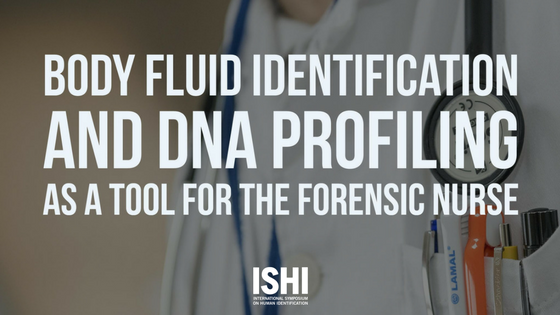The term “crime scene” typically calls to mind images of a ransacked apartment or a decomposing body in a field. But, should we also consider alternative images urine-soaked bedsheets or blood-spattered floors in a long-term care facility or caretaker’s home as crime scenes? Could they contain forensic evidence that would supplement the findings of trauma on the body of the victim to help determine if abuse has occurred and a crime has been committed?
Submitted by: Ashley Hall, University of Illinois at Chicago
Research has shown that elder mistreatment has become sufficiently prevalent in our society to constitute a major public health concern. In fact, results from large-scale studies have identified the rate of abuse in the elderly as ranging from 7.6-11% nationwide, and rising annually. This abuse can have far-reaching negative effects on the physical, psychological and financial aspects of the victim’s life.
In the investigation of suspected abuse, we suggest a forensic nurse is a valuable member of the multidisciplinary investigatory team. (S)he could play a critical role in not only the processing of the physical evidence of trauma on the victim, but also in preserving evidence from the environment in which the alleged abuse took place using standard forensic body fluid identification and DNA profiling techniques, which may reveal probative evidence that would otherwise remain unexamined.
In the investigation of elder abuse, a forensic nurse is a valuable member of the team. Share on X
For example, distinctive patterns of saliva may be found in cases where an elder experienced excessive coughing or choking while not being monitored properly, or urine-soaked bedsheets could indicate neglect. Blood found on the bedsheets could result from a wound inflicted on the patient or by an abrasion that was not treated properly or promptly. The correlation of evidence from the entire crime scene, i.e. the victim’s person and the physical surroundings, could aid in investigations and contribute to the successful prosecution of abusers by aiding the trier-of-fact in reconstructing the events that took place during the crime.
We investigated the potential efficacy of applying the body fluid identification and DNA profiling techniques common in the practice of forensic science to the detection of blood, saliva and urine stains that may be indicative of elder abuse in physical settings such as long-term care facilities. Body fluids were serially diluted to simulate the natural loss of sample with the passage of time after deposition and spotted on cotton/polyester sheets. Presumptive testing allowed us to not only identify the location of potential stains, but also to analyze patterns. Further testing confirmed the identity of the body fluid, and DNA profiling associated the donor with a reference sample.
Presumptive testing was performed using the Phadebas® Forensic Press Test (saliva), luminol (blood) and an alternative light source (urine). Testing resulted in successful location and pattern analysis of samples diluted to 1:10 to 1:100 for saliva, 1:100 to 1:1000 for blood and 1:10 for urine. Confirmatory testing (RSID™ Saliva, RSID™ Blood, UriTrace® Urine) was generally more sensitive by an order of ten. Dilutions as low as 1:1000 (saliva) and 1:10,000 (blood) successfully supported DNA profiling, while analysis of urine samples was less successful.
One of the benefits of the forensic body fluid identification assays is the relative ease with which they can be performed. Testing does not consume a great deal of sample or require extensive training to perform. The assays are relatively rapid, and although a few of them require up to two hours for incubation, only about 15 minutes of hands-on time are necessary. In addition to identifying a body fluid, it may also be beneficial to individualize its source.
The results of the proof-of-concept experiments described here indicate that the presumptive body fluid tests commonly used by forensic scientists could also be applied to investigations of alleged abuse in long-term care facilities and caregivers’ homes, providing not only fluid identification but also pattern analysis. STR profiling of recovered samples for individualization of the donor could also prove valuable to investigators and prosecutors, increasing the instances of successful prosecutions.
In the experiments we performed, blood, saliva and urine were diluted to simulate the natural loss of sample with the passage of time since deposition. It will be interesting, in future studies, to correlate this dilution factor with actual time passed under different environmental conditions. Also interesting will be the testing of a larger sample set and the evaluation of variables such as temperature, substrate and collection devices.
Currently, our team includes Ashley Foster MS (University of Nebraska-Lincoln, Master of Applied Science Program), Toni Kennedy BS and Larry Barksdale MA (University of Nebraska-Lincoln, Forensic Science Degree Program) and myself (Ashley Hall PhD (University of Chicago at Illinois, Department of Biopharmaceutical Sciences)). We are an interdisciplinary team including experts in serology, DNA analysis, and all aspects of crime scene analysis. In the future, we are seeking to expand our collaborative team to include experts from other fields.
WOULD YOU LIKE TO SEE MORE ARTICLES LIKE THIS? SUBSCRIBE TO THE ISHI BLOG BELOW!
SUBSCRIBE NOW!


